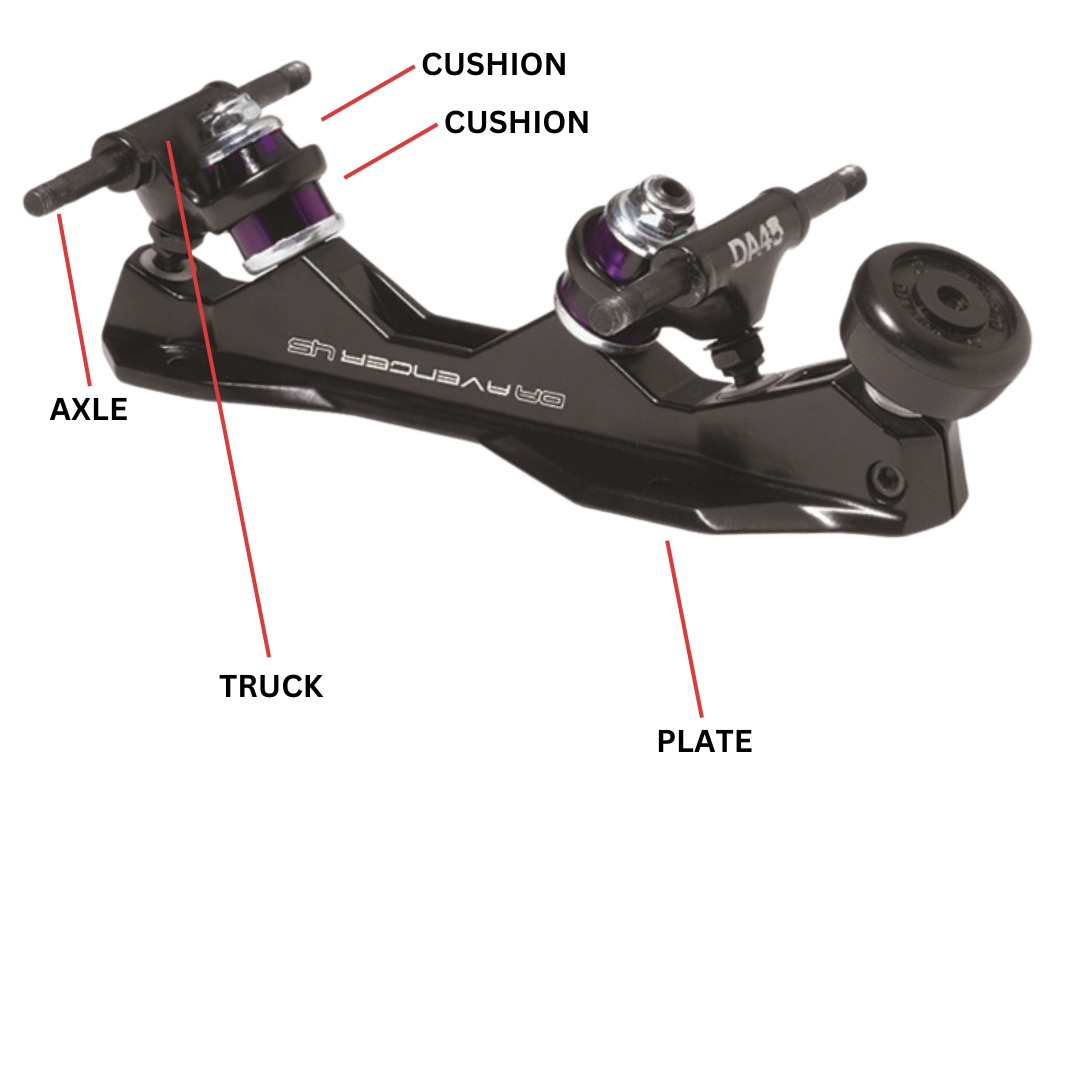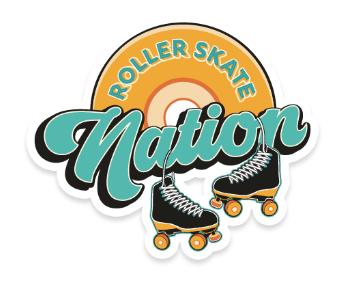Skate Plate 101
What are the different plate material options, and what are the differences between them?
Different types of roller skate plates, including some of the best roller skate plates, are made from either nylon or metal alloy (aluminum, magnesium, or platinum).
Nylon:
Nylon roller skate plates are lighter and are often found on less expensive roller skates. Sometimes nylon plates are referred to as plastic. Nylon plates can flex, which means less power transfer. Some styles of skating require the skater to go up on their toe stops when stopping or during quick take offs, and the flex nylon plates have is not ideal for these styles. Other skaters prefer nylon plates because of how lightweight they are. If lightweight is your preference, and flex isn't a concern, look for a nylon plate that is still durable, such as the Sunlite plate that has patented v-bracing design and a lifetime warranty against breakage.
Metal Alloy:
Aluminum (most common), magnesium and platinum plates are preferred by skaters needing a plate that is less likely to break if used frequently, roughly or by a heavier skater. Alloy plates also offer more power transfer (less flex) than nylon plates.
Aluminum plates can vary greatly in quality and price. Lower priced aluminum plates have a tendency to be bit heavier and this can make skating a little more difficult for a smaller skater. Higher end metal alloy plates (such as aircraft aluminum or magnesium) are much more lightweight, but maintain durability. When going with a metal alloy plate, look for something lightweight such as hollow aluminum plates or plates made from magnesium or aircraft aluminum.
What does 7mm and 8mm axles mean?
Axles are commonly available in two sizes, 7mm (9/32) or 8mm (5/16). Most current skates are manufactured with an 8mm axle because 8mm bearings and locknuts are more common and readily available. When ordering bearings and locknuts, you will need to be sure you know whether your axles are 7mm or 8mm.
High-end plates like Labeda Proline, Sure-Grip Power-Trac, Sure-Grip Snyder and Roll Line still use a 7mm axle. 7mm axels are fully machined which provides tighter tolerances, meaning less play or wiggle of the bearing on the axle. 8mm axles have lower tolerance, which will allow more play (or wiggle) of the bearing on the axle.
What does single action and double action mean?
All roller skate plates have cushions (sometimes referred to as bushings). Some plates are "single action" and others are "double action".
Single action simply means that there is only one cushion on the plate on each kingpin. Double action equals two cushions, one on each side of the truck on the kingpin of the skate plate. Most skates now offer double action because it gives the skater more play (maneuverability) when skating.
Cushions are made out of either urethane or rubber. Similar to wheels, cushion hardness is rated on the 'A durometer' and can range from 71 up to 98. 71 being the softer end of the scale and 98 being the harder. Often skate brands will simply list them in terms such as “soft” or “firm”.
What does 45 degree angle and 10 degree angle mean?
Most skate plates come with a 45 degree angle or 10 degree angle. There are a few other angles, but these are the most common. Both styles can be advantageous for a variety of skaters. More elite skaters usually know which degree they prefer for their style and will stick with that at all times. Newer skaters may find it best to use the following suggestions, or experiment with both and see which one best suits their style of skating.
10 degree plates tend to give a more stable feeling, because the kingpin and cushions are located more vertically under the skater. This is definitely the most common style.
45 degree plates have become very popular particularly with roller derby skaters. The cushions are positioned almost horizontally, this makes the skate more responsive to direction changes. Make quick changes in direction easier and quicker. This is commonly referred to in roller derby as cutting, used to quickly get across the width of the derby track to stop an opponent. On a 45 degree angle plate, the kingpins point to the side more than a typical plate.
What does it mean if a plate has adjustable or fixed pivot pins?
Some modern roller skate trucks are designed to be adjustable, allowing the skater to change the truck's responsiveness by adjusting the tightness of the kingpin or pivot cup. This feature allows for customization based on personal preference and skating style.



